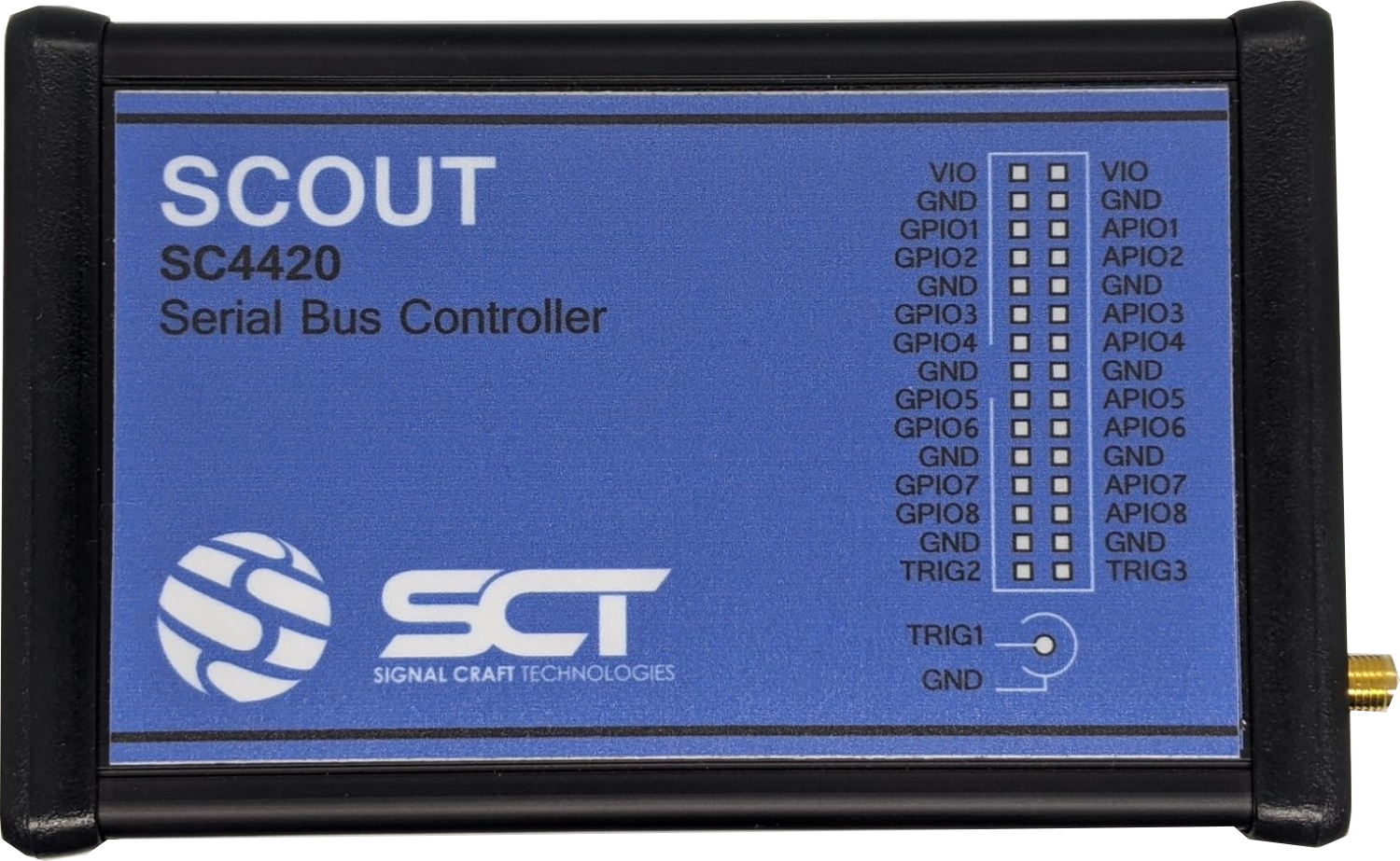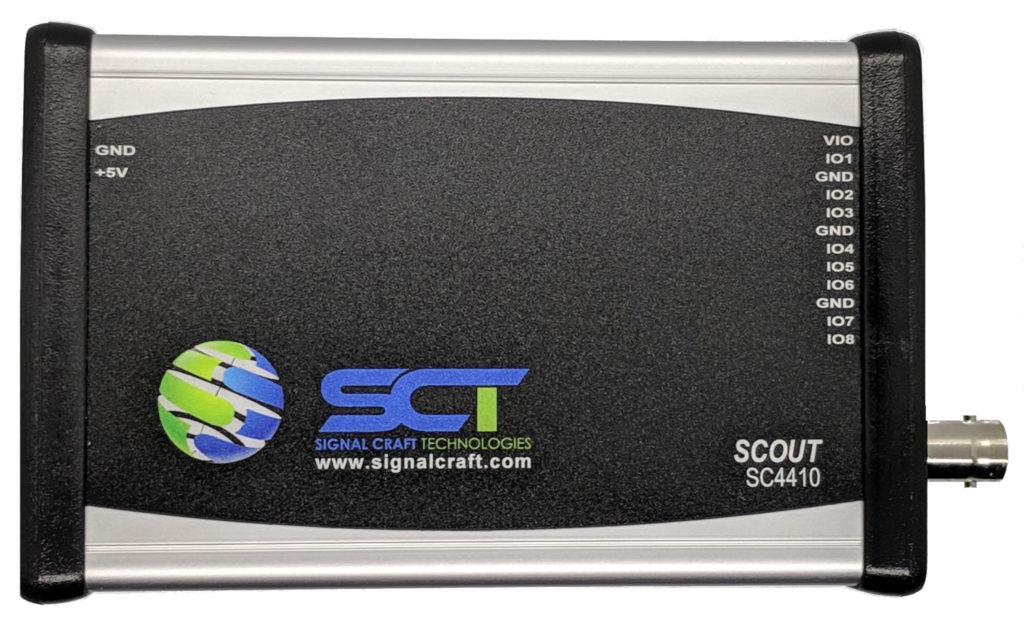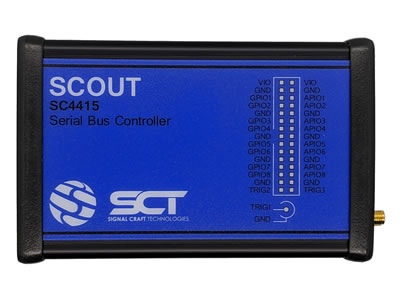Description
The SC4420 is a third-generation device in the Scout family. It was designed to be fit, form and function compatible with the SC4415. Scout is the highest performing MIPI controller on the market. Unlike other USB-based serial bus dongles, Scout products are designed for high-speed test and control applications. Architected around an FPGA, the SC4420 ensures that all timing and control functions are deterministic. The device is targeted at verification benches and high-volume production test applications requiring reliable operation over millions of test sequences.
The Scout SC4420 represents the next generation in the Scout product line. It incorporates enhanced features and has options to support MIPI-RFFE, MIPI-I3C, MIPI-SPMI, I2C and SPI protocols in single master mode.
The test interface incorporates serial bus, GPIO and triggering functions. This interface connector provides flexibility, several interconnect-cabling options, and helps to minimize noise coupling. The interface voltage (VIO) is software selectable. For non-standard interface voltages, Scout can be configured to accept an external voltage reference. Several triggered command buffers provide scripting capability for high speed test and verification applications. Triggering modes include internal (software command) and external options (via GPIO or the trigger input).
Scout instantiates itself as a standard COM port via USB. The unit supports manual operation using a terminal emulator or fully automated control in ATE environments via any programming language support.



